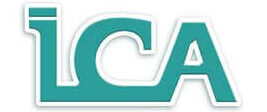My Engineering Internship, here it goes:
Throughout the period of my internship at Industrial Controls and Automation, INC., I shadowed both, the project manager and the project engineer. I visited different companies where they were working on a variety of projects. The companies ranged from a paper factory to a freight forwarding company, and a bread-making machine factory.
During these visits, I got the chance to open panel boards and grasp the purpose of the components that I learned about in class, such as circuit breakers, relays, frequency drivers, and more. For instance, even after taking a Power Systems class, I did not really understand how relays functioned. It was not until I saw and worked with a real relay, that I understood how the contacts work, and how the relay sends a signal but does not act on it.
From the Books to the Field
Foremost, relating it back to my class, in a line with a fault, the relay is the one that would tell the breaker to trip, but the relay itself does not fix the problem— I explained this concept to my classmates who also didn’t understand how relays functioned. Overall, my engineering internship at ICA has challenged not only what I have learned but also the way I learn and practice.
As a student, one of the toughest parts of getting out in the real world is reconciling the theory with the practice, because nothing is as black and white as we are often taught in class. Moreover, it is also easy to get accustomed to having one answer for almost every exercise, and unconsciously end up thinking there is only one solution for a problem.
For instance, one of the first tasks I had was programming on the LOGO Comfort application for the SIEMENS LOGO! PLC and I kept insisting on getting the solution for every exercise.
An Encounter
After working alongside the Project Director, Luis Guerra, on one of the tasks, I witnessed how my idea to solve the problem was different from his—but the important part is that my idea worked, and it was as valid as his. Not only for programming but for everything in general; there are multiple solutions out there, and the best one depends on the application you need, and what you are prioritizing such as resources over time.
Subsequently, I also realized there are different ways to program. For instance, linear vs. step, and transition programming. Whereas in my programming classes, I just worked on the programs without really thinking HOW, as long as it worked, I did not really care how I did it. This way took more trial and error (and much more time) than usual, because of my lack of a thinking process behind it.
Enlightenment
However, since I started using the LOGOComfort, I was highly encouraged to work on pseudocodes; by either writing it all out, defining the steps, drawing the time sequences of the inputs and outputs—whatever I wanted to do. They just told me to always give it some thought on paper before using the computer. This practice, although tedious, helped me program faster, and whenever I was having a problem, it was mostly because I was lazy and did not want to write everything down.
Foremost, the LOGO! training has been one of my favorites because I have never really been a fan of programming, and even though I struggled to complete the assignments I was given, I enjoyed them and started to like them.
In a Nutshell
All in all, my engineering internship has been an amazing experience that helped me understand what I have learned in class and helped me regain interest in something that I thought I hated.
If you are interested in knowing more about this company, ICA Inc., USA, do not hesitate to contact them! They have the latest automation products in stock and the best engineers that offer the best engineering services for your company.

